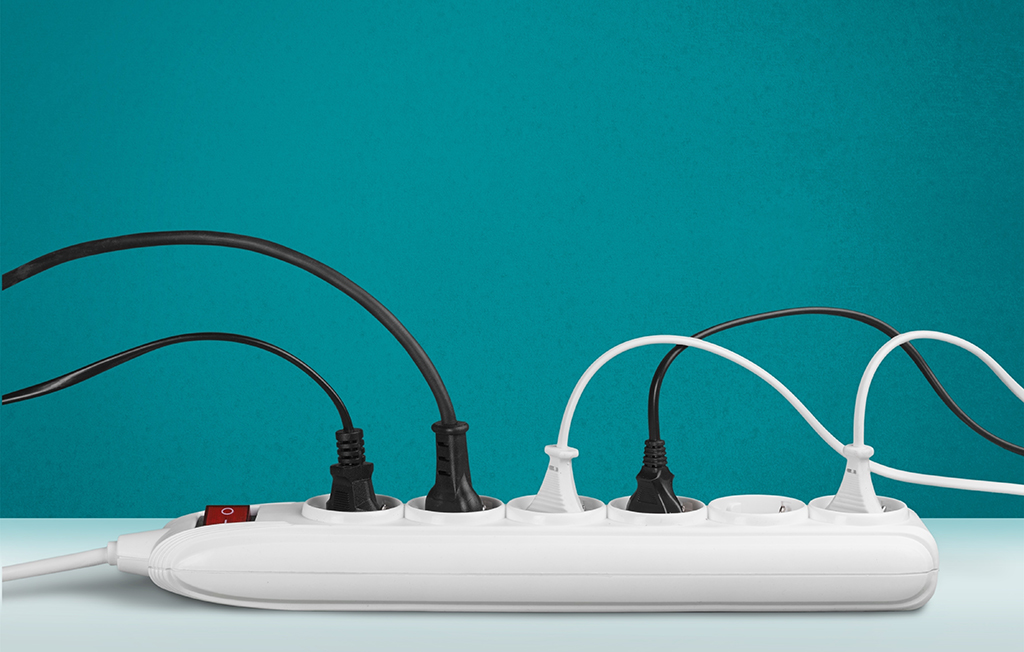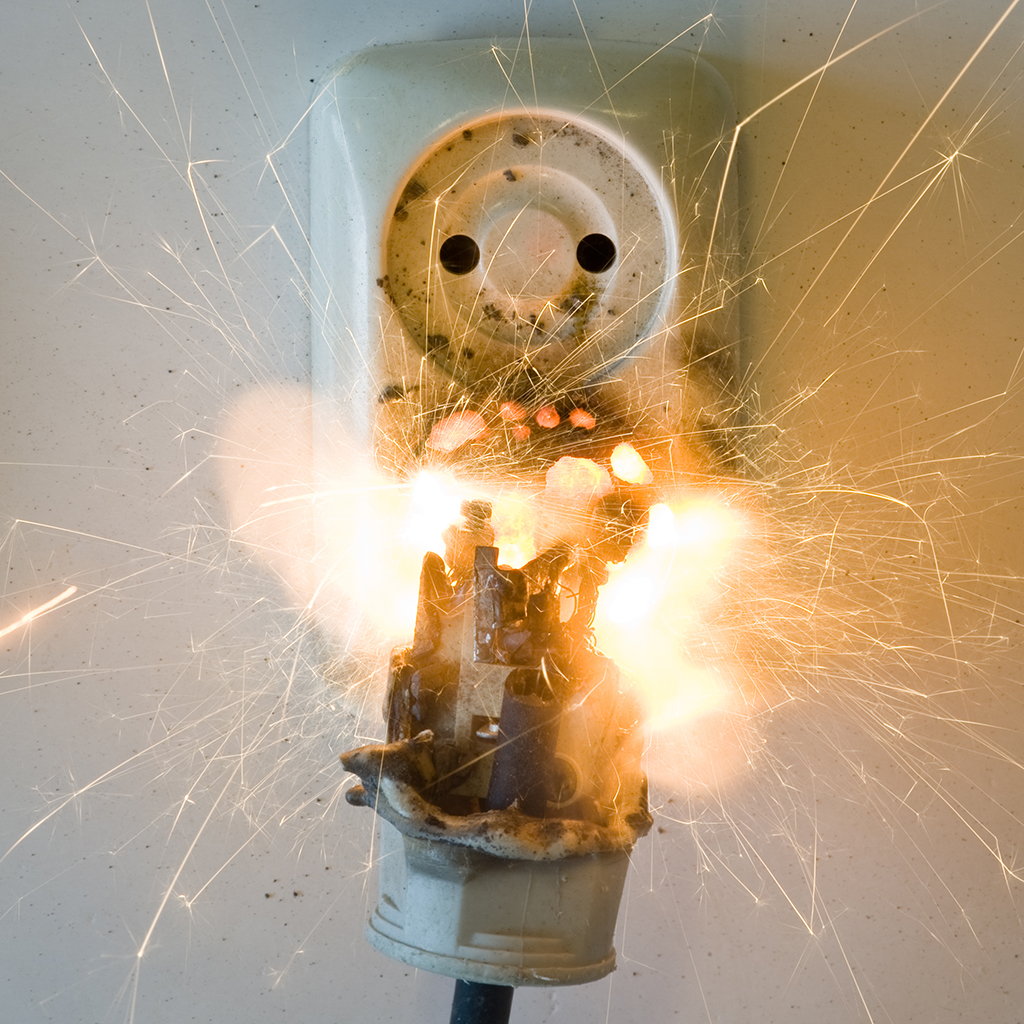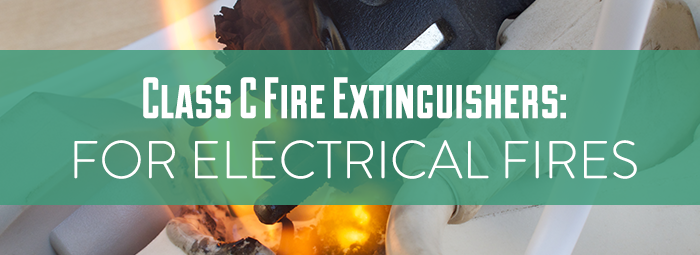Knowing fire classifications is an essential part of any fire safety plan, particularly in commercial settings where electrical, chemical, or flammable liquid fires can occur. Different kinds of fires are fought with different approaches and require specific types of extinguishers. Class C fires, sometimes referred to as electrical fires, require their own class c fire extinguishers. There are also certain precautions that must be taken when confronting a class C fire. Understanding the distinct qualities of class C fires and how to prevent and extinguish them is vital for keeping your commercial and residential buildings safe.
What To Know About Class C Fire Extinguishers and Electrical Fires

What Are Class C Fires?
A class C fire is an energized electrical fire. “Energized” in this case means that it is fed by a power source. Class C fires may begin from a short circuit, faulty wiring, power cord damage, overcharged devices, or overloaded electrical outlets. Any place where electrical equipment is used or electrical wiring is present is a potential site for a class C fire.
When a fire occurs in an electrical unit such as a kitchen appliance, power panel, computer, or other media device, the electricity powering the equipment acts as a constant source of spark or ignition. Water and water-based foams are not capable of putting out class C fires because they cannot counteract the constant, electrical ignition source. Because water conducts electrical currents, using water on a Class C fire can result in a spread of the electricity and therefore the fire’s source of ignition.
“Class C” is a term that distinguishes a fire from class A and class B fires. Class A is a category for fires consuming a source like fire or wood that can be extinguished with water, and class B fires are fueled by flammable liquids like gasoline.

How to Fight a Class C Fire
A class C fire can become a class A fire if the material in flames is cut off from the main power source (i.e. a computer on fire is unplugged from the electrical outlet). However, this is not always safe or possible and sometimes it’s unclear if an appliance is completely cut off from its source of power. If water is used on a class C fire that continues to be fueled by an electric power source, dangerous and even fatal results can occur. The person fighting the fire may be electrocuted if a water-based extinguisher is utilized in an attempt to control a Class C fire.
This is why having a class C fire extinguisher and knowing how to use it properly is so important for comprehensive fire safety. Class C fire extinguishers are the only type suitable for smothering the flames of a fire that is still connected to an electrical source. Once it becomes clear the burning object is completely disconnected from any electrical sources, a Class C extinguisher may be switched out for an extinguisher appropriate for fighting Class A fires. However, often times a dry chemical fire extinguisher can be used on class A, B, and C fires.
Fire Extinguishers For Class C Fires
A class C fire requires an agent that can break apart the elements that feed a fire: oxygen, heat, and fuel. Carbon dioxide (CO2) extinguishers smother a fire by eliminating the oxygen. They also suppress the fire’s heat because their discharge is very cold. Similarly, dry chemical extinguishers work to separate the elements of a fire. The fire dies when the oxygen and fuel can no longer interact due to the chemicals introduced by a dry chemical extinguisher. These Class C fire extinguishers may contain monoammonium phosphate, potassium bicarbonate, or potassium chloride, all of which are suitable for putting out class C fires.
Fire extinguishers of any type can only work to extinguish a fire when used properly. It is important to review fire extinguisher instructions regularly so you are familiar with its proper use should a fire ever occur. Additionally, make sure to test your fire extinguisher periodically to ensure it’s in proper working condition.
Preventing Class C Fires
The best fire-fighting strategy is prevention. For class C fires, make sure all your wiring, appliances, and electrical components are up to code and in good working condition at all times. Avoid overloading outlets and improperly charging electrical devices. Still, fires can happen even in the best maintained environments.
Make sure you have an up-to-date fire extinguisher designed specifically for putting out class C fires near any place where an electrical fire may occur. Know your fire safety equipment and how to use it so you can be fully prepared in the event of a class C fire. As always, consult with local fire-fighting authorities on the best safety procedures for your building.
______________________
Strike First Corporation Of America manufactures high standard & quality Dry Chemical Fire Extinguishers, Class K Kitchen Fire Extinguishers, and Carbon Dioxide Fire Extinguishers for your business and office needs. We also produce an unbeatable quality of Fire Extinguisher Cabinets and other Fire Extinguisher Accessories. Be sure to contact us to find a dealer near you today.


One comment on “Class C Fire Extinguishers: For Electrical Fires”